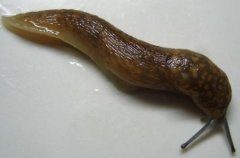How to sow beet seeds? What soil is better for beet planting and how to harvest sugar beet?
Sugar beets are a good crop-flexible to soil types, undemanding and unlikable. More importantly, you can harvest two different delicious crops from the same plant, making it a vegetable that is well worth making room in your garden.
This is the first time we offer a simple five-step guide to growing beets. You can't resist growing over and over again!
1. Prepare soil for beets
Sugar beets grow well in most soil types, but they don't like alkaline or acidic soils (simple do-it-yourself soil pH test kits are available in good garden centers). Fertile soil is necessary, so dig or cover it with rotten compost before sowing.
Loose light soil will make the roots swell easily. If your soil is very compact, you need to stir a few inches at the top with a garden fork and rake it to break the clods.
Growing in raised beds and containers is also an option, but make sure they don't dry out.
two。 Sow beet seeds
What looks like a pointed beet seed is actually a protective capsule to seal two or three real seeds. This means that for each seed sac you plant, you will need to cut off at least one seedling with scissors or a sharp knife to give the remaining seedlings room to grow.
Some sugar beet varieties are available, producing only one seed per capsule, thus avoiding the need for thinning. These are called "monogerm" varieties and are usually marked "monogerm" on the seed bag.
Separate the beet seeds into 10 cm (4 inches) with rows spaced 20 cm (8 inches), or separate 15 cm (6 inches) separately. Punch a hole about 2 centimeters (1 inch) deep with a dibber or your finger, and then put the seed capsule in. Be patient: sugar beets may take a while to sprout, especially the earliest sowing. Germination may be incomplete, so if there is any blank after germination, just pop up a new seed capsule.
Preheating the soil with a cold frame or row cover will help you get the earliest sowing to a good start, but do not start beet seeds too early, as this usually leads to the plant & # 39; bolting & # 39; (flowering). This means that vegetables are past their heyday. Our Garden Planner can provide you with advice on when to sow sugar beets (and many other crops) in your area for maximum accuracy based on climate data from your nearest weather station.
In order to continuously supply sugar beets, sow short rows or small pieces of beets at summer intervals.
3. Grow sugar beets
Throughout the growing season, sprinkle thin grass shavings around the beets every time you mow the grass (assuming you don't use any herbicides on your lawn). Mowing will add a small amount of extra nitrogen to the soil, which your sugar beets will like, while also helping to retain moisture and weeds.
Beets don't need any extra watering unless the soil looks completely dry. In a hot climate, you may find that sunshade cloth is a necessary condition to prevent bolting in summer.
4. Harvest beet
Sugar beets can be harvested in two ways: leaves and roots. When you need them for salads and sandwiches, unscrew the young leaves, but just take some from each plant, or the roots will become fat.
To harvest any root that suits your size, from "baby" beets to thick tennis size. Don't leave them underground for too long, because they will become hard and woody.
Harvest the roots by gathering all the leaf stems together with one hand and gently pulling upward. The roots should be easy to detach from the soil, but if necessary, extra leverage can be used with forks, especially cylindrical varieties. Twist the leaves and leave a large stem on the beet. Don't cut off the leaves or trim the roots, or they will "bleed" and cause terrible chaos!

- Prev

What are the main parasitic plants of slugs and snails? How to prevent and manage slugs and snails
Slugs, this kind of pest, do you know how to walk? This kind of pest is mainly parasitic on those plants. What are the hazards? Let's get to know it together. Host plants: about crops: beans, lettuce, cabbage, cabbage, tomatoes and many other gardens
- Next

How to plant calla lilies and what are the precautions? How to fertilize calla lilies? what are the nutritional requirements?
Few flowers have the elegance and simplicity of calla lilies. Although not real lilies, Karas is an integral part of weddings and funerals, and their classic flowers represent love and dedication. Karas can be high at the waist and needs plenty of water and high phosphate fertilizer.
Related
- A course of planting techniques and methods on how to grow carrots
- How to plant the latest tulips?
- Is it better to pick tea in the morning or in the afternoon? When is the best time for tea to be picked? what is the third or fifth tea?
- Launch Yuanxiao Happy combination Haocha + Tea Yuan healthy Taste
- Penghu Tourism "Fireworks 20 Parade with You"
- 2022 West Lake Happiness holds "Digital Revitalization Voucher" and draws iphone13 and laptop.
- Banqiao Fuzhou social houses are designed to change start-up combined with police elimination to create a safe and livable environment
- The convenient measure of "mechanical weeding" in Xinbei has been abused and the Agriculture Bureau has imposed heavy penalties on the illegal land consolidation.
- Changgeng University Joins Hands with Four Memory Factories to Rescue Memory Talent Shortage
- The list of Taiwan's top 100 MVP managers is listed by the Director-General of the Farmers' Association of Sanxia District.

